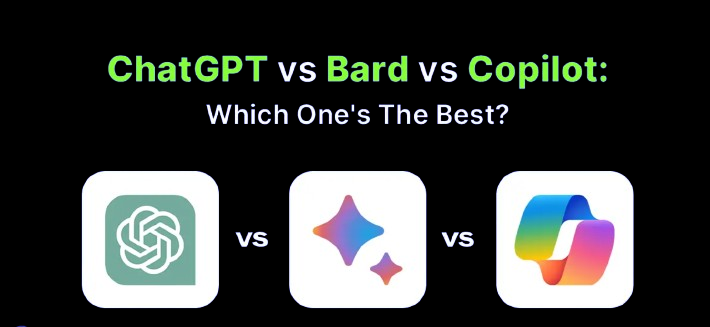The landscape of artificial intelligence is rapidly evolving, and at the forefront are powerful language models like ChatGPT, Bard, and Copilot. These tools have captured the imagination of users and developers alike, each offering unique strengths and capabilities. But with so much buzz, it can be challenging to understand the technical nuances that set them apart. Let’s delve into the inner workings of these AI marvels, providing a comprehensive comparison through the lens of 2024 advancements.
Under the Hood: Architecture and Training Data
At the heart of each model lies a complex neural network architecture. ChatGPT leverages OpenAI’s GPT-3.5 and GPT-4 models, relying on massive datasets of text and code for training. Bard utilizes Google’s PaLM 2 and the recently introduced Gemini Pro, with access to Google’s vast repository of research papers, code, and internet data. Copilot, developed by GitHub and OpenAI, is powered by GPT-4, focusing on understanding and generating programming languages.
These architectural and training data differences significantly impact each model’s strengths and weaknesses. ChatGPT excels at natural language processing and generating human-like text, making it ideal for creative writing, dialogue, and marketing copy. Bard shines in generating innovative text formats and offering insights into existing content, particularly useful for writers and researchers. With its specific training in code, Copilot becomes a valuable companion for programmers, suggesting code snippets and assisting in debugging.
Examples in Action: Putting AI to the Test
Understanding their technical makeup is crucial, but how do these models translate into real-world use? Let’s explore some examples:
Scenario 1: Writing a Poem
- ChatGPT: Generates a captivating and emotionally resonant poem, drawing inspiration from its vast literary corpus.
- Bard: Creates a unique poem with unexpected turns and metaphors, leveraging its access to diverse content sources.
- Copilot: While not directly designed for poetry writing, it could potentially assist in finding rhyme schemes or specific word choices related to a chosen theme.
Scenario 2: Researching a Topic
- ChatGPT: Summarizes information from various sources, presenting a comprehensive overview but potentially lacking deep insights.
- Bard: Analyzes research papers and scientific data, offering a nuanced understanding of a topic backed by factual evidence.
- Copilot: This wouldn’t be directly relevant to the research itself, but could help analyze or visualize data associated with the research.
Scenario 3: Coding a Program
- ChatGPT: Struggles with understanding complex coding structures and logic, making it unsuitable for real-world programming tasks.
- Bard: While not specifically designed for code, it might potentially translate natural language instructions into basic code snippets.
- Copilot: Suggests relevant code for specific tasks, identifies bugs, and completes repetitive coding tasks, significantly boosting developer productivity.
Key Differentiators: Beyond Technical Specs
Beyond the technical details, some crucial factors differentiate these models:
- Accessibility: ChatGPT offers a free tier with limited functionality, while Bard and Copilot require paid subscriptions for advanced features.
- Real-time Data Access: Bard enjoys the unique advantage of accessing and incorporating real-time data, enhancing its responses to current events and information.
- Focus and Integrations: ChatGPT prioritizes natural language interactions, while Bard emphasizes creative text formats and research assistance. Copilot is laser-focused on code generation and developer guidance.
- Ethical Considerations: Each model raises ethical concerns regarding potential bias, factual accuracy, and misuse. As with any AI tool, responsible and transparent usage is paramount.
Choosing the Right Tool: It Depends
The “best” model depends entirely on your specific needs. For casual conversation and creative writing, ChatGPT might be a good starting point. For in-depth research and innovative text formats, Bard excels. Developers seeking coding assistance should turn to Copilot.
As AI technology evolves, expect exciting advancements in all three models. Ultimately, the most impressive aspect of these tools is not their technical prowess, but their potential to empower human creativity and problem-solving across various fields. By understanding their strengths and limitations, we can leverage these AI companions to push the boundaries of what’s possible.
Remember: This is just a snapshot of a dynamic field. Stay informed about the latest developments in AI language models to make the most informed choices for your specific needs.

